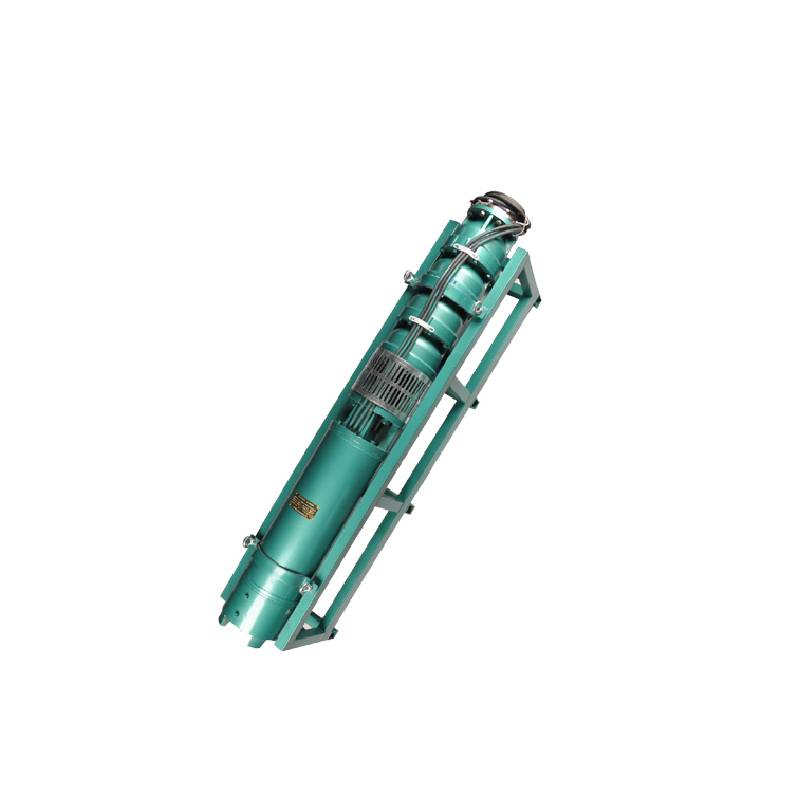Aug . 17, 2024 01:00 Back to list
Submersible Pumping Systems for Efficient Underwater Applications and Solutions
The Underwater Motor Pump Innovations and Applications
Underwater motor pumps are specialized devices that are crucial in various industries, ranging from agriculture to wastewater treatment and oil extraction. These pumps are designed to operate submerged in water, making them particularly efficient for transferring fluids from depths that traditional pumps cannot reach. In this article, we will explore the working mechanism, advantages, and diverse applications of underwater motor pumps.
How Underwater Motor Pumps Work
The operation of an underwater motor pump is relatively straightforward. The motor is located at the pump's bottom, directly submerged in the fluid it is designed to move. This configuration has several advantages; for example, it minimizes the risk of cavitation—a phenomenon that occurs when pressure falls below the vapor pressure of the liquid, causing bubbles to form and collapse, which can damage the pump. As the pump operates underwater, it maintains a constant pressure, allowing for better performance.
The pump comprises several components, including a motor, impeller, and protective casing. The motor powers the impeller, which rotates to create a centrifugal force that moves the water through the pump. As the impeller spins, it generates a difference in pressure that draws water into the pump and pushes it out through a discharge outlet.
Advantages of Underwater Motor Pumps
One of the main advantages of underwater motor pumps is their efficiency. By placing the motor underwater, the pump can operate with less energy as it does not have to work against air pressure. Additionally, underwater motor pumps are designed to withstand harsh conditions, such as high pressure and corrosive environments, thanks to their robust construction and materials like stainless steel or specialized polymers.
Another significant benefit is their compact design. Unlike above-ground pumps that require extensive piping and additional supports, underwater pumps can be installed directly in the water source. This makes them suitable for locations with limited space or difficult terrains, such as deep wells or flooded areas.
underwater motor pump

Applications Across Various Industries
Underwater motor pumps have found applications in numerous fields. In agriculture, they are commonly used for irrigation systems, allowing farmers to efficiently draw groundwater for their crops. Their ability to function at considerable depths and deliver high flow rates makes them invaluable in ensuring crops receive sufficient water.
In the construction industry, these pumps are essential for dewatering processes. They help remove excess water from construction sites, ensuring that foundations can be laid safely and effectively. Similarly, in mining, underwater pumps are utilized to manage water levels in mines, preventing flooding and ensuring a safe working environment for miners.
The oil and gas industry also benefits from underwater motor pumps. These pumps facilitate the extraction of oil and gas from beneath the seabed, operating effectively in deepwater drilling environments where traditional pumps cannot function. Their design accommodates the high pressures and corrosive environments typically found in subsea operations.
Furthermore, wastewater treatment plants often rely on underwater motor pumps to transport sewage and wastewater efficiently. These pumps are essential in maintaining the flow of wastewater through treatment processes, ensuring that facilities can operate smoothly and meet environmental regulations.
Conclusion
In conclusion, underwater motor pumps are essential tools that offer efficient solutions for fluid transfer in various applications. Their innovative design allows for high performance in challenging environments, making them invaluable across multiple industries. As technology continues to advance, we can expect further improvements in the efficiency and reliability of underwater motor pumps, thereby enhancing their role in sustainable and effective fluid management solutions worldwide.
-
Submersible Water Pump: The Efficient 'Power Pioneer' of the Underwater World
NewsJul.01,2025
-
Submersible Pond Pump: The Hidden Guardian of Water Landscape Ecology
NewsJul.01,2025
-
Stainless Well Pump: A Reliable and Durable Pumping Main Force
NewsJul.01,2025
-
Stainless Steel Submersible Pump: An Efficient and Versatile Tool for Underwater Operations
NewsJul.01,2025
-
Deep Well Submersible Pump: An Efficient 'Sucker' of Groundwater Sources
NewsJul.01,2025
-
Deep Water Well Pump: An Efficient 'Sucker' of Groundwater Sources
NewsJul.01,2025
-
 Submersible Water Pump: The Efficient 'Power Pioneer' of the Underwater WorldIn the field of hydraulic equipment, the Submersible Water Pump has become the core equipment for underwater operations and water resource transportation due to its unique design and excellent performance.Detail
Submersible Water Pump: The Efficient 'Power Pioneer' of the Underwater WorldIn the field of hydraulic equipment, the Submersible Water Pump has become the core equipment for underwater operations and water resource transportation due to its unique design and excellent performance.Detail -
 Submersible Pond Pump: The Hidden Guardian of Water Landscape EcologyIn courtyard landscapes, ecological ponds, and even small-scale water conservancy projects, there is a silent yet indispensable equipment - the Submersible Pond Pump.Detail
Submersible Pond Pump: The Hidden Guardian of Water Landscape EcologyIn courtyard landscapes, ecological ponds, and even small-scale water conservancy projects, there is a silent yet indispensable equipment - the Submersible Pond Pump.Detail -
 Stainless Well Pump: A Reliable and Durable Pumping Main ForceIn the field of water resource transportation, Stainless Well Pump has become the core equipment for various pumping scenarios with its excellent performance and reliable quality.Detail
Stainless Well Pump: A Reliable and Durable Pumping Main ForceIn the field of water resource transportation, Stainless Well Pump has become the core equipment for various pumping scenarios with its excellent performance and reliable quality.Detail
